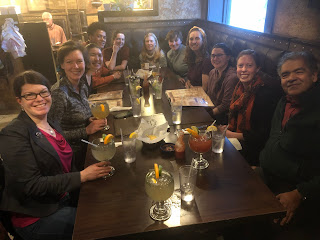Porites nubbin parts

"Po, po, po, Porites! Nubbin parts!" - Cas, singing to the tune of the O'Reilly Auto Parts jingle I told you Cas loves terrible puns. And I am not especially thrilled about this one getting stuck in my head. He sang it off-and-on for an hour the other day while I drilled, and Maikani picked up on the catchy jingle too. Ugh. A freshly-drilled nubbin hole Well, we did get some spawning this month, but not nearly what we were hoping for in the end. It was enough to set up two small experiments but not nearly enough for our full experimental design. We can try again in May (that's actually supposed to be a bigger spawning event than April for our species), but in the meantime, we decided to deploy our back-up plan. Enter the nubbins. "Nubbin" is a term used by coral researchers to refer to miniature cores they collect from coral colonies. You take a circular drill bit, drill into the coral, and then break the core out with a chisel. Amazingly, the colonies l




